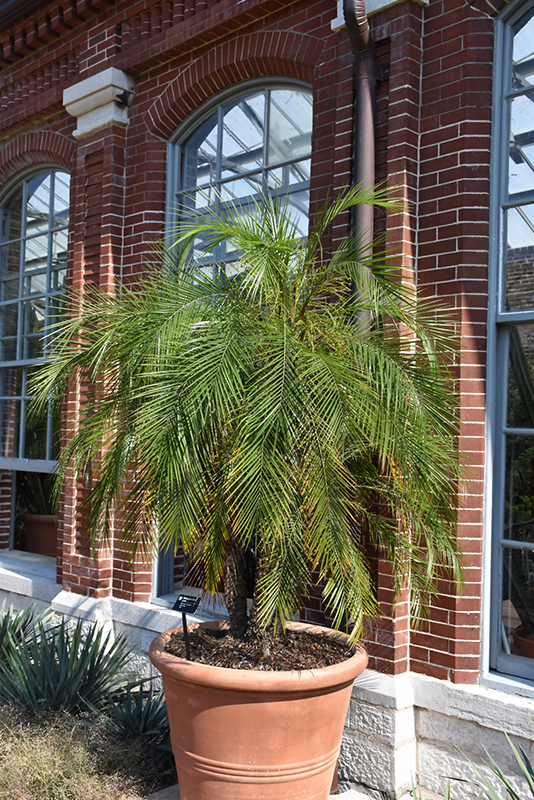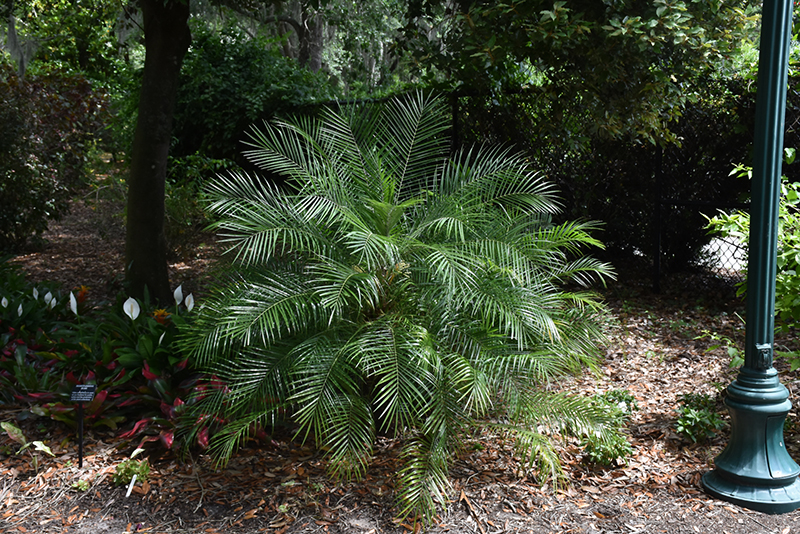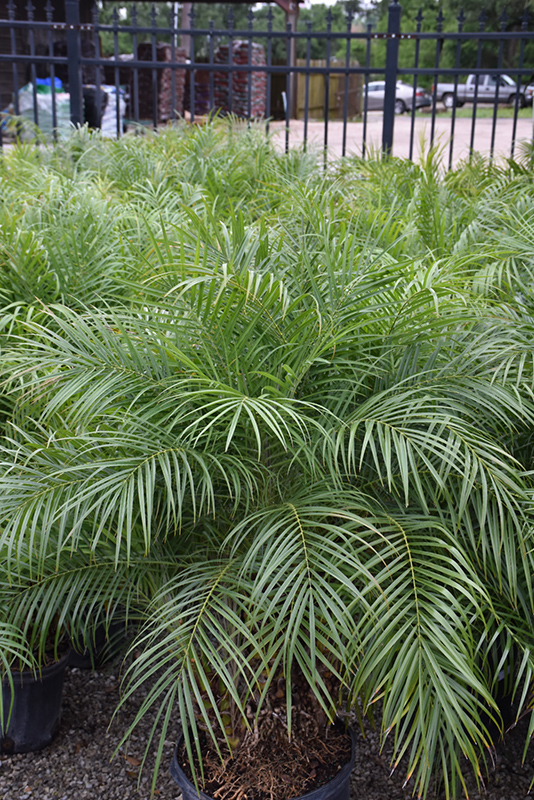Height: 10 feet
Spread: 10 feet
Sunlight:
![]()
![]()
Hardiness Zone: 9a
Other Names: Miniature Date Palm, Robellini
Description:
This miniature palm makes an incredible accent plant; cut suckers away to maintain a single trunk; will slowly mature into a compact palm to make an excellent focal point; great tropical accent for patio planters
Ornamental Features
Pygmy Date Palm is primarily grown for its highly ornamental fruit. The fruits are showy yellow drupes which fade to dark brown over time, which are carried in abundance in mid fall. The fruit can be messy if allowed to drop on the lawn or walkways, and may require occasional clean-up. It has attractive bluish-green deciduous foliage. The narrow pinnately compound leaves are highly ornamental but do not develop any appreciable fall color. It has panicles of yellow flowers hanging below the branches in mid summer. The rough gray bark adds an interesting dimension to the landscape.
Landscape Attributes
Pygmy Date Palm is a multi-stemmed deciduous tropical plant with a towering form, with a high canopy of foliage concentrated at the top of the plant. Its relatively fine texture sets it apart from other landscape plants with less refined foliage.
This tropical plant will require occasional maintenance and upkeep, and should not require much pruning, except when necessary, such as to remove dieback. Gardeners should be aware of the following characteristic(s) that may warrant special consideration;
- Self-Seeding
Pygmy Date Palm is recommended for the following landscape applications;
- Accent
- Vertical Accent
- Windbreaks and Shelterbelts
Planting & Growing
Pygmy Date Palm will grow to be about 10 feet tall at maturity, with a spread of 10 feet. It has a low canopy with a typical clearance of 2 feet from the ground, and is suitable for planting under power lines. It grows at a slow rate, and under ideal conditions can be expected to live for 60 years or more. This is a dioecious species, meaning that individual plants are either male or female. Only the females will produce fruit, and a male variety of the same species is required nearby as a pollinator.
This tropical plant does best in full sun to partial shade. It does best in average to evenly moist conditions, but will not tolerate standing water. It may require supplemental watering during periods of drought or extended heat. It is not particular as to soil type or pH. It is somewhat tolerant of urban pollution. This species is not originally from North America.



